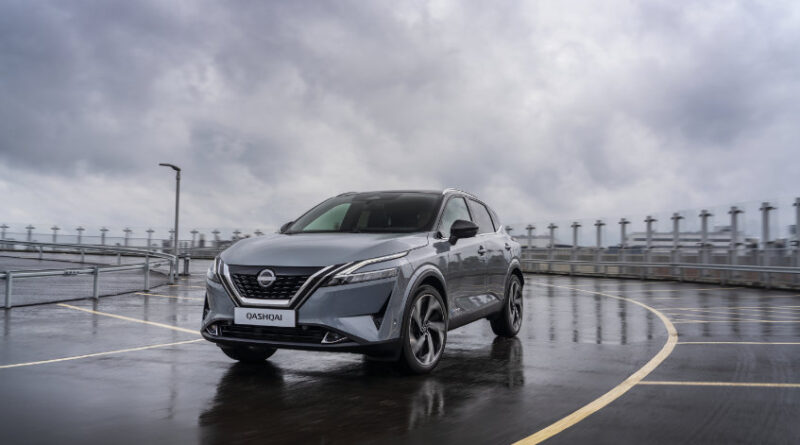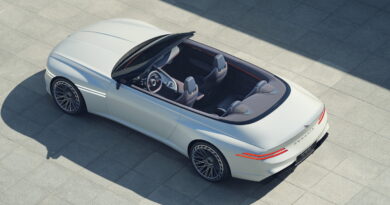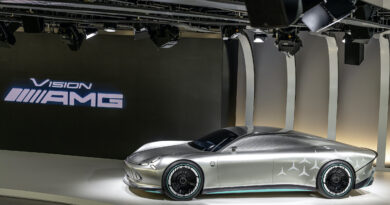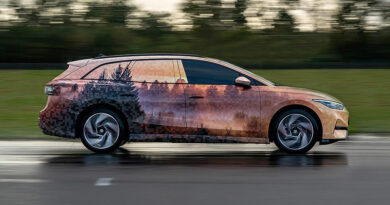Nissan Qashqai e-Power review: Is it really an almost-EV?
Its maker believes the Nissan Qashqai e-Power will turn buyers into EV-believers. Even though it’s a hybrid, and not the plug-in type.
“The Qashqai e-Power will appeal to drivers who aren’t yet ready for a pure EV in their lives but do want to be more sustainable and enjoy the fun-to-drive EV feeling day to day,” says Nissan’s product strategy and pricing chief for the region that includes Australia, Arnaud Charpentier.
EV Central’s first chance to test the new Qashqai e-Power, due to arrive in Australia early in 2023, was at its recent presentation to international media in Sweden. Time spent driving the small crossover on motorways, country roads and city streets means we’re now able to judge whether Nissan is over-hyping or under-selling e-Power.
But before we get to the Nissan Qashqai e-Power review, a quick recap of what e-Power means, exactly…
It’s a hybrid powertrain. To be technically precise, it’s a series hybrid. And this means it doesn’t work the same way as a Toyota hybrid does, or any of the parallel hybrids offered by other makers. All of these, in some way and with great frequency, blend ICE and electric motor outputs to turn the wheels.
In contrast, e-Power uses only an electric motor to turn the wheels. Nothing else. Ever. The only thing its petrol-burning ICE does is power a generator that supplies most of the juice that goes to the electric motor.
Nissan Qashqai e-Power review: Qashqai e-Power tech step by step…
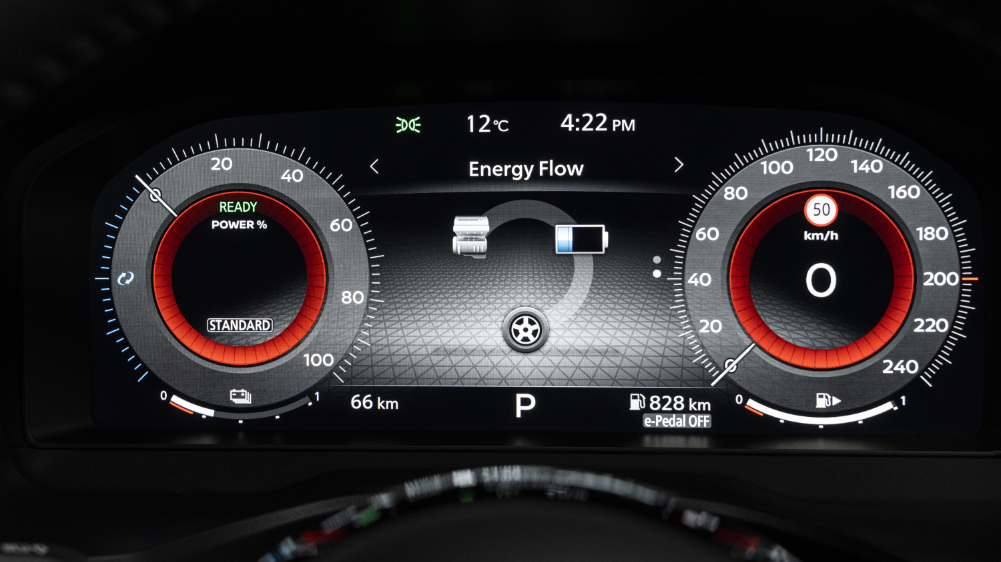
The ICE under the Qashqai e-Power’s bonnet is a turbo 1.5-litre triple with advanced variable compression ratio tech. It’s basically three-quarters of the 2.0-litre engine used in some models from Nissan’s (failed in Australia) premium brand Infiniti.
Chosen for its compact dimensions and high fuel efficiency, its maximum power and torque outputs are 116kW and 250Nm. Bolted to its crankshaft is an electric generator. Nissan doesn’t give its maximum electrical output, but it’s safe to assume it’s a number only a little less than 116kW.
Via the e-Power system’s inverter, the generator’s output goes directly to the electric traction motor, to the battery pack under the Qashqai’s front seats, or, sometimes, to both at once.
Ready to install, the battery pack weighs around 56kg. Its usable storage capacity is 2.0kWh, around double the typical figure for similar-size Toyota hybrids.
But the chemistry of the cells selected for e-Power deliver power density rather than energy density. They’re designed, in other words, to spit out and suck up electricity very fast. The battery pack’s maximum output is 66kW, and it can absorb power at the same rate during regenerative braking.
Finally, we arrive at the electric motor that drives the Qashqai e-Power’s front wheels. It’s a permanent magnet synchronous machine, similar to that used in the current Leaf.
Its maximum power and torque outputs are 140kW and 330Nm, numbers that are pretty typical for a small-ish, single-motor EV. It drives the wheels through a single fixed reduction gear.
Though e-Power adds 200kg-plus to the weight of the Qashqai, it also makes the small crossover a fuel-sipper. Nissan is yet to complete the homologation process, but expects to earn an official WLTP rating of 5.3 or 5.4L/100km.
Nissan Qashqai e-Power review: It’s different to drive…
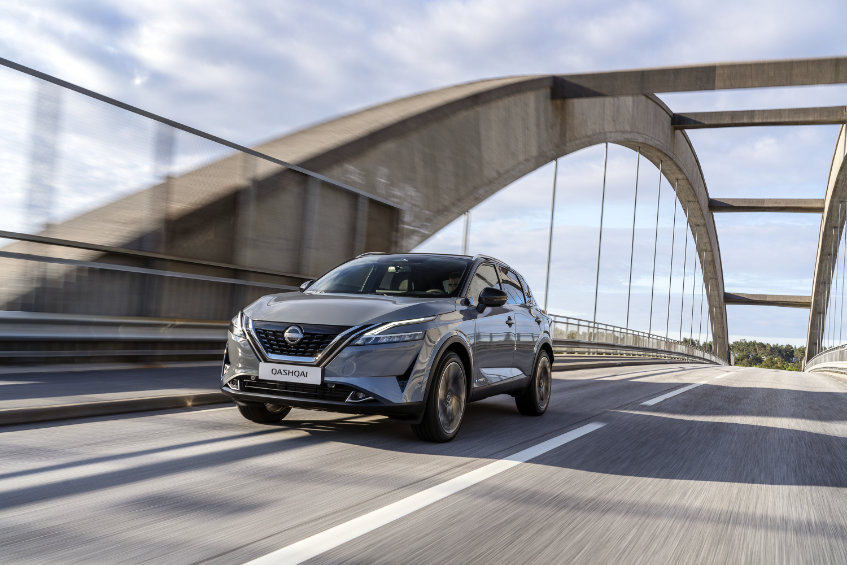
There’s one significant way in which the Qashqai e-Power fails to mimic an EV. The Nissan’s off-the-line acceleration isn’t as immediate or as lively as a purely battery-powered vehicle.
It’s not too difficult to figure out why. When the Qashqai e-Power is stationary and the accelerator is pressed down hard, the battery pack can immediately supply only 66kW to the 140kW motor. The remainder has to come from the generator, and it takes the ICE a second or two to get it spinning fast enough to supply the deficit.
What the driver feels is a pause between pushing on the pedal and being pushed in the back. It’s un-EV-like, but it only lasts until the Nissan has reached around 30km/h.
Once it’s rolling the Qashqai e-Power is more like an EV than any other hybrid. It delivers the same kind of smooth and shift-free surge of acceleration that an EV does.
Nissan’s system also avoids the dreary engine drone of a Toyota hybrid when accelerating hard. The Qashqai’s ICE, when it can be heard, revs up and down roughly in line with vehicle speed and accelerator pedal position.
When driving sedately the engine is often inaudible, or close to it. Nissan equips the Qashqai e-Power with an active noise-cancelling system. It’s quite effective. Often it’s impossible to tell if the ICE is running or not, except by checking the car’s energy-flow display. The ICE starting up or shutting down is practically imperceptible.
In stop-and-start city driving the Qashqai e-Power spends more time running on electricity alone than the typical hybrid, another reason it’s quiet. The distance it can cover can vary greatly, but Nissan engineers say that 3 to 5km is achievable with feather-footed driving.
Nissan Qashqai e-Power review: Variables to try…
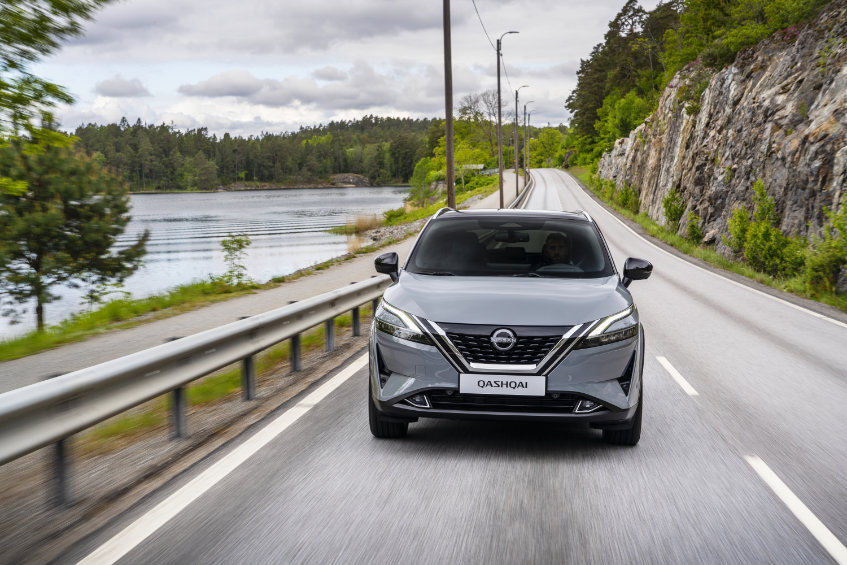
The Qashqai e-Power driver has a number of ways to make the drivetrain behave the way they prefer.
Regenerative braking can be varied in two ways. When the transmission is in ‘D’ the regen is mild, but tapping the stubby selector lever backwards to ‘B’ increases it by a noticeable degree.
There’s also the option of pressing the adjacent e-Pedal button, just like that in a Leaf EV. This brings a significant increase in regen to 0.2g, enough that the brake lights glow when the driver releases pressure on the accelerator pedal.
In the Qashqai e-Power, e-Pedal doesn’t bring the vehicle to a complete stop. Instead it reduces speed to the creeping pace that’s typical of an ICE-powered car with an automatic transmission.
As well, there are three driving modes to choose from. While there’s not a huge difference between the normal and sporty modes, selecting Eco does bring one interesting change; it reduces regen braking in ‘D’ to zero.
This means the Qashqai e-Power coasts or glides when the accelerator is released. Nissan engineers say this delivers the car’s best possible fuel efficiency.
After one 60km-plus leg of our test drive, using mostly Eco, the Qashqai e-Power’s trip computer showed consumption of just 5.2L/100km. Impressive. If accurate…
Nissan Qashqai e-Power review: Does it all add up?
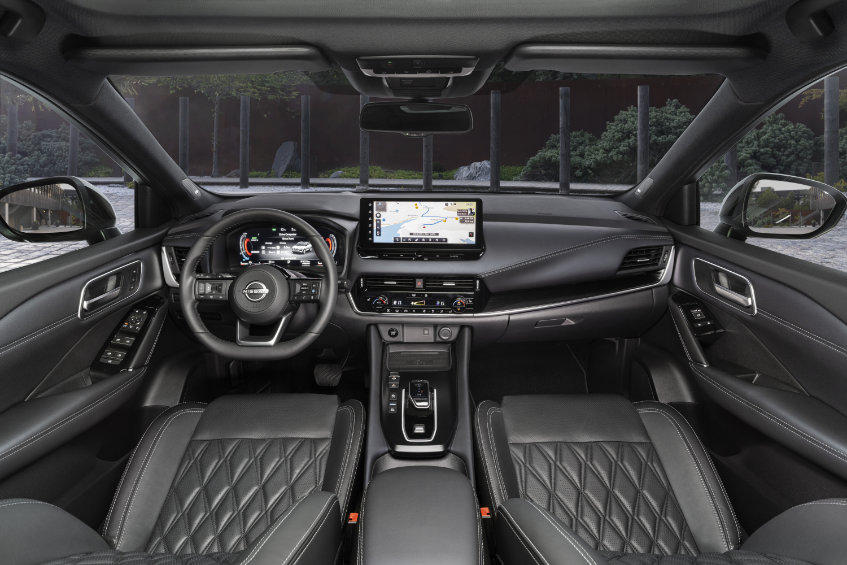
Though the Qashqai e-Power isn’t as EV-like to drive as Nissan would like you to believe, it’s still a very fine hybrid-powered small crossover. It’s sure to satisfy customers who want to take that vital first step away from total ICE dependence.
It’s quieter and smoother than its obvious hybrid-powered competitors, with fuel efficiency that’s clearly in the same ballpark.
City and urban driving is inevitably where the Qashqai e-Power will shine brightest. This is the environment where its engine will often be silent and its fuel consumption will be lowest.
But though this hybrid crossover has several very attractive attributes what doesn’t compute is its pricing.
Nissan has just announced Australian prices for the purely ICE-powered versions of the new Qashqai, due to arrive late this year. There are increases. Really big increases.
The ST-L and Ti grades that top the ICE line-up jump by around $8000, to $42,190 and $47,390 (before on-road costs and other charges) respectively. Nissan Australia presently plans to offer e-Power only in these upmarket variants, and you can count on the series hybrid drivetrain adding a significant amount to these numbers.
Prices may be the most EV-like thing of all about the Qashqai e-Power…

